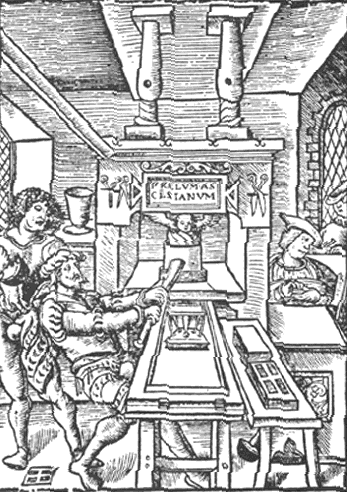End of Europe's Middle Ages

To understand the importance of the printing press, it is necessary to
understand that before the printing press virtually every book and every
document was a manuscript. Written by hand, the production of even a single
page was an arduous and time-consuming task. Books were expensive and only
very popular texts of universal appeal were likely to be copied. Wood-cut
printing had been in use in Europe since the twelfth century but, because a
new block had to be carved in reverse for each page, few works justified the
intensity of labour required for publication by this method and experienced
scribes could often complete a text more quickly and at a lower cost. Large
volumes of religious pictures and playing cards were the most common items
produced by wood-cut printing.
With the moveable-type printing press, no longer did each page have to be separately carved, with the preparation of a new page for printing needing little more than the reorganization of the type letters in the frame. Large numbers of texts of limited popularity could now be printed. Printing was still an expensive endeavour and printers frequently sought to guarantee financial success by continuing to print proven "best-sellers" such as the Bible and religious commentaries.
Printing was considered vulgar and only for the poor. Many aristocratic bibliophiles refused to disgrace their collections with the presence of a non-manuscript text. It fell to the lower classes to recognize the importance of the printing press. And they did - by the end of the fifteenth century, more than one thousand printers had printed between eight and ten million copies of more than forty thousand book titles.
 |
Return to Language & Literature |
The End of Europe's Middle Ages / Applied History Research Group / University of Calgary
Copyright © 1997, The Applied History Research Group